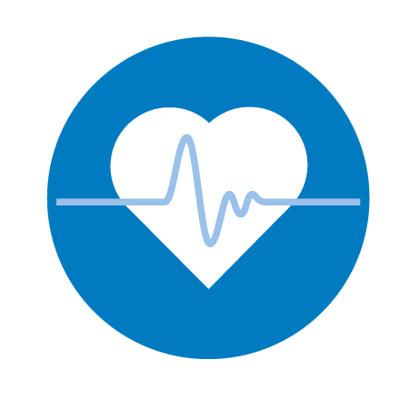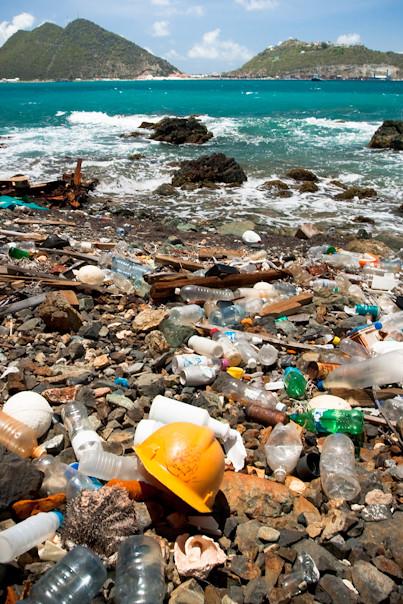The sleek waves of the ocean once sparkled with an effortless beauty, blending seamlessly with the endless sky. Yet, hidden beneath the surface, an insidious intruder has woven its web, silently wreaking havoc on our delicate marine ecosystem. Microplastics, those minuscule particles born from the fragmentation of plastic waste, have become an alarming force to reckon with. As they infiltrate our oceans, rivers, and even the very air we breathe, their sinister effects extend far beyond the realm of marine life. Brace yourselves as we dive into the depths of plastic pollution and its malevolent impact on our health. In this article, we unravel the tale of how these inconspicuous microplastics have emerged as a looming threat to our well-being, exposing the hidden dangers that lie beneath their mesmerizing yet treacherous facade.
The Invisible Threat: Exploring the Detrimental Impact of Microplastics on Human Health
Plastic pollution has become a growing concern worldwide, and its detrimental impact on human health cannot be ignored. Among the many forms of pollution, microplastics have emerged as an invisible threat that is pervasive in our environment. These tiny particles, less than 5mm in size, are a result of the breakdown of larger plastic items and fibers released from synthetic textiles.
The harmful effects of microplastics on human health are being widely researched, and the findings are alarming. These minuscule particles have the ability to enter our bodies through various channels, such as ingestion, inhalation, and even skin contact. Once inside, they can cause a range of health issues by accumulating in different organs, disrupting biological processes, and promoting inflammation. Studies have linked the presence of microplastics to respiratory problems, hormonal imbalances, immune system disorders, and even an increased risk of cancer. Additionally, the ingestion of microplastics through contaminated food and water sources poses a significant threat, as they have the potential to accumulate toxic chemicals and transfer them into our bodies.
- The invisible nature of microplastics makes them difficult to detect and remove from the environment, exacerbating the challenge of controlling plastic pollution.
- Efforts are being made to raise awareness about the detrimental impact of microplastics and implement measures to reduce their release into the environment.
- Individuals can contribute by minimizing their use of single-use plastics, supporting initiatives promoting plastic waste reduction, and advocating for stricter regulations on plastic manufacturing and disposal.
| Health Effect | Common symptoms |
| Respiratory problems | Coughing, wheezing, shortness of breath |
| Hormonal imbalances | Irregular menstrual cycles, decreased fertility |
| Immune system disorders | Increased susceptibility to infections, allergies |
| Cancer risk | Increased likelihood of developing cancer |

Unveiling the Alarming Consequences: Understanding the Link between Plastic Pollution and Health Issues
Plastic pollution has emerged as a global concern with far-reaching implications for both the environment and human health. While the obvious impact of plastic waste on marine life and ecosystems is well-documented, the detrimental effects of microplastics on human health have become increasingly apparent. These tiny plastic particles, measuring less than 5mm in size, are pervasive in our environment and are finding their way into our bodies through various pathways.
One of the most concerning health effects of microplastics is their ability to act as carriers for harmful pollutants. Once ingested, these particles can accumulate toxins such as heavy metals, pesticides, and endocrine disruptors. This toxic payload poses a significant risk as it can enter the bloodstream and potentially disrupt various systems in the body. Growing evidence suggests that microplastics may contribute to a range of health issues, including hormonal imbalances, reproductive disorders, immune system dysfunction, and even an increased risk of cancer.

Taking Action for a Cleaner Future: Practical Solutions to Combat Microplastic Contamination
Microplastic contamination is a growing concern worldwide, as tiny plastic particles infiltrate our environment, food chain, and ultimately our bodies. These microscopic fragments, less than 5mm in size, are found in a variety of sources including cosmetics, clothing, and industrial waste. But what are the harmful effects of these tiny plastic pollutants on our health?
1. Toxic Chemicals: Microplastics have the ability to absorb and concentrate toxic chemicals from the surrounding environment. These chemicals include notorious pollutants like pesticides, persistent organic pollutants (POPs), and heavy metals. When ingested, these toxins can disrupt our hormonal balance and cause various health issues such as reproductive problems, cancer, and developmental disorders.
2. Digestive System: Microplastics are not easily broken down in our bodies and can accumulate in our digestive system. This can lead to inflammation, leaky gut syndrome, and hinder the absorption of essential nutrients. Furthermore, these plastic particles can attract harmful bacteria, increasing the risk of gastrointestinal infections and affecting overall digestive health.
| Health Risks | Effects |
|---|---|
| Reproductive problems | Disruption of hormonal balance |
| Cancer | Increased risk due to exposure to toxins |
| Developmental disorders | Interference with normal growth and development |
To protect ourselves from the harmful effects of microplastic contamination, it is crucial to take action and implement practical solutions. These solutions include:
- Reducing Plastic Consumption: By opting for eco-friendly alternatives such as reusable bags, bottles, and packaging, we can drastically decrease the amount of plastic waste that enters our environment.
- Supporting Wastewater Treatment: Encouraging the implementation of effective wastewater treatment systems helps to minimize the release of microplastics into rivers and oceans.
- Supporting Research: Continued research is essential for gaining a better understanding of microplastic contamination and its effects on human health. Supporting scientific research initiatives and funding can contribute to finding innovative solutions and developing effective prevention strategies.

Protecting Our Wellbeing: Promoting Awareness and Lifestyle Changes to Minimize Microplastic Exposure
Introduction
Plastic pollution has become an alarming global issue, with devastating consequences for both our environment and our health. Among the many forms of pollution, microplastics have gained significant attention due to their pervasive presence in our daily lives. These tiny pieces of plastic, measuring less than 5mm in size, have made their way into our oceans, air, and even our bodies, posing potential risks to our wellbeing. In this post, we delve into the harmful effects of microplastics on our health and explore ways to minimize our exposure through awareness and lifestyle changes.
Understanding the Harmful Effects of Microplastics
Microplastics can enter our bodies through various routes, such as ingestion, inhalation, and even dermal absorption. Research suggests that these minuscule particles can disrupt our hormonal balance, impair our immune system, and lead to chronic inflammation. The long-term consequences of microplastic exposure may include increased risk of cardiovascular diseases, cancers, and developmental issues.
To fully comprehend the gravity of this issue, it is crucial to acknowledge that microplastics are not only present in the environment at large but also in the food we consume. Seafood, for instance, can be heavily contaminated with microplastics, as these particles are often ingested by marine organisms, subsequently entering the human food chain. Furthermore, microplastics have been found in tap water, bottled water, and even the air we breathe, highlighting their widespread presence and potential impact on our health.
Measures to Minimize Microplastic Exposure
Thankfully, there are steps we can take to protect our wellbeing and reduce the risk of microplastic exposure. Increased awareness is key to initiating necessary lifestyle changes, and being mindful of the following recommendations can make a significant difference:
- Avoid single-use plastics: Opt for reusable alternatives like stainless steel water bottles, cloth grocery bags, and glass food containers.
- Filter tap water: Utilize water filters at home to reduce the presence of microplastics and other contaminants in your drinking water.
| Eat a balanced diet: | Consume a variety of fruits, vegetables, and whole foods to promote a healthy immune system and minimize exposure through contaminated seafood. |
| Launder clothes conscientiously: | Opt for natural fabrics like cotton, linen, or hemp, as synthetic materials shed microplastic fibers during washing. |
By implementing these simple adjustments in our daily lives, we can play an active role in protecting our wellbeing and contribute to the reduction of microplastic pollution. Together, we can create positive change and safeguard both our health and the environment for future generations.
The Conclusion
As we dive into the depths of our world’s plastic pollution crisis, one thing becomes painfully clear: the harmful effects of microplastics on our health are as insidious as they are alarming. The consequences of this invisible enemy seeping into our bodies are vast and multifaceted, leaving no organ or system unscathed. It is a silent battle we must face head-on, not only for ourselves but for the survival of our fragile ecosystems.
From the moment these minuscule villains infiltrate our waterways, the stage is set for a cascade of devastation. As they dance upon the surface, concealing their true nature, they are effortlessly consumed by unsuspecting aquatic life. Their journey begins within the stomachs of the smallest organisms, yet their impact resonates throughout the fragile food chain. From plankton to whales, these microplastics infiltrate every level, threatening the very essence of life beneath the waves.
Their toxic embrace spills into the oceans, offering no respite to marine creatures who flock to these polluted waters. In the darkest corners of the seabed, once-revered sanctuaries become battlegrounds for survival. Glistening particles of debris, mistaken for sustenance, betray the trust that once existed between predator and prey. The relentless onslaught of microplastics causes irreversible damage, compromising immune systems, disrupting reproduction, and ultimately wreaking havoc on entire populations.
But the reach of these microscopic demons does not end at the shoreline. As they weave their way into our drinking water and infiltrate the air we breathe, the invisible hand of microplastics tightens its grip. In human bodies, the consequences become agonizingly real. Tiny fragments of plastic infiltrate our organs, blurring the boundaries between health and harm with every passing moment. Scientists have begun to uncover worrisome links between microplastics and serious health issues, including inflammation, hormonal disturbances, and even the onset of chronic diseases.
The time for complacency is long gone. It falls upon us, as the custodians of our planet, to confront this formidable foe. We must uncover innovative solutions to prevent further contamination, focusing on reducing plastic consumption, implementing stricter waste management practices, and developing sustainable alternatives. Our collective efforts will undeniably shape the future for generations to come, determining whether we leave behind a legacy of despair or a beacon of hope.
In this battle against plastic pollution, awareness is our greatest weapon. By shining a spotlight on the harmful effects of microplastics, we illuminate a path towards change. Let us not turn a blind eye to the injuries inflicted upon our interconnected world. With a collective resolve, we can forge a future where microplastics no longer contaminate our waters, our bodies, and our dreams of a healthier planet. Together, we can engineer a society that champions sustainable practices, offering solace and redemption to the ecosystems that have suffered the brunt of our indifference.
For it is within our grasp to bridge the daunting chasm between comprehension and action, untangling the tendrils of plastic pollution that have ensnared both our environment and our health. In this battle, neutrality will not be our shield. Standing firm against the tide of microplastics, we must rally forces across nations, professions, and perspectives. The time is now, and the stakes are higher than ever. Embrace this pivotal moment, ensuring that our journey towards clean oceans and resilient health begins today, leaving no trace of plastic pollution hidden in the annals of history.



